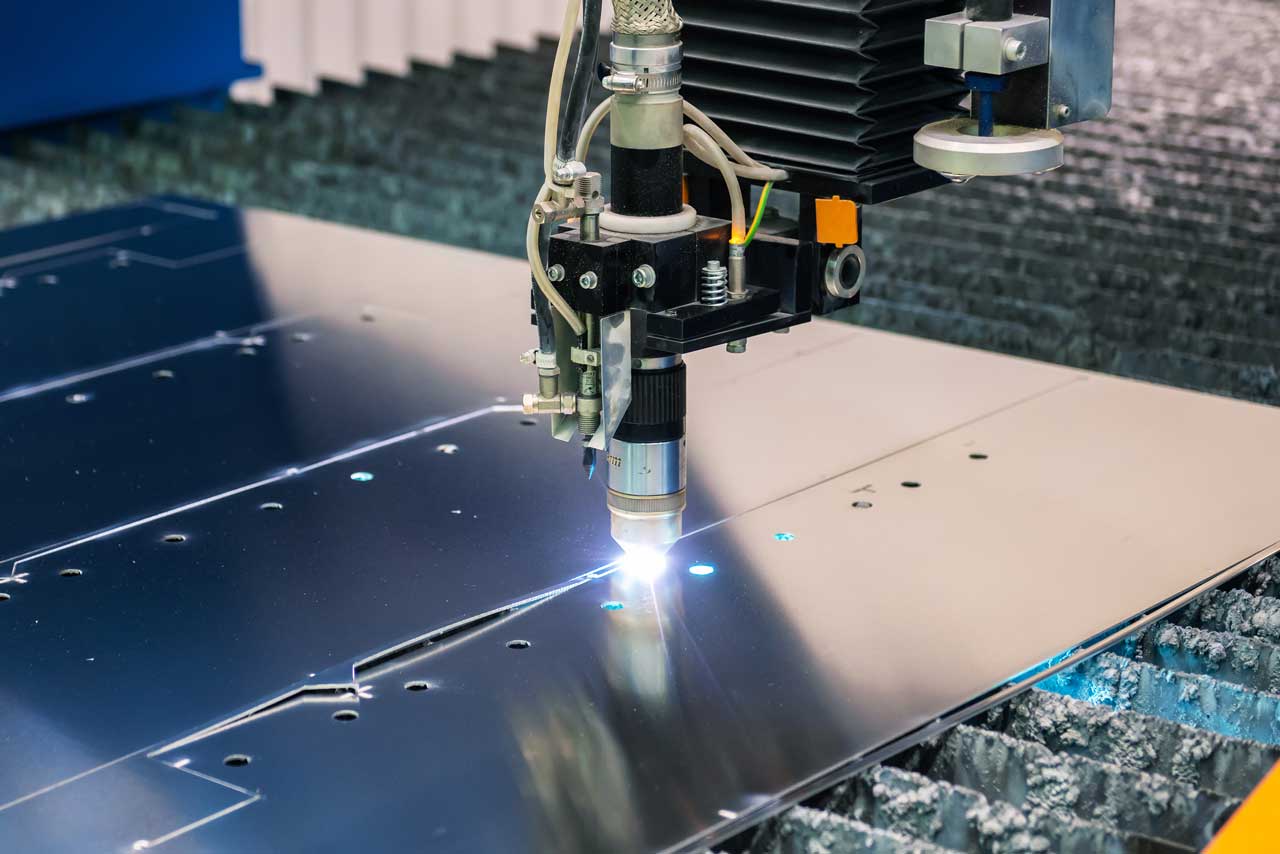
Table of Contents
Different industries make use of various metal fabrication processes, depending on the parts needed. Aluminum laser cutting, for example, is a very popular choice for any aluminum parts and is one of the best cutting methods available. Projections show that the global metal fabrication market will reach a value of $29.4 billion by 2029.
So what makes aluminum laser cutting so beneficial, and do you need it for your business? Keep reading to find out.
What Is Laser Cutting?
Laser cutting is a process that uses a combination of a high-powered laser and CNC (computer numerical control) to produce desired parts.
A CNC or G-code is created which tells the machine the pattern to cut. A motion control system then controls the optics that the laser is directed through to cut the desired shapes. The laser is focused to burn through a given material, leaving a high-quality edge.
When cutting a part, the laser cutting process will typically begin at the edge of the material. If it doesn’t, the operator can use a piercing process to create a hole so the cutting can begin.
Benefits of Aluminum
Aluminum is a non-ferrous metal and is one of the most common metals on the planet. It’s very lightweight and easily machinable.
Aluminum is soft but highly durable, which makes it ideal for laser cutting. Iron and steel are both also popular choices, but aluminum has the advantage of being naturally corrosion- and rust-resistant.
Aluminum is also a very flexible material and is easily recyclable. This makes it more sustainable than many other metals and keeps waste to a minimum.
Benefits of Aluminum Laser Cutting
When getting parts cut, you have a range of options to choose from. Laser cutting is often the best and is widely used in various industries such as aerospace and the military because of the many advantages it has.
Precision
When compared to other cutting techniques, laser cutting is by far the most accurate. Depending on the part being cut, tolerances are generally within 0.003 mm and 0.006 mm. Plasma cutting is usually closer to 0.02 mm, and other methods such as die-cutting can have tolerances upwards of 1 mm.
In some industries, precision is one of the most important factors. Aerospace laser cutting, for example, needs to be incredibly accurate.
Lack of Tooling
With some other cutting techniques, there’s a cost involved in terms of tools. Physical cutting surfaces wear down with use, and tools sometimes need to be custom manufactured. This isn’t the case with laser cutting, which helps save on costs, especially for limited-run projects.
Laser cutting machines also have very few mechanical moving parts. This means maintenance costs tend to be lower, and operation is typically quite simple.
Complexity
At NAMF (New Age Metal Fabricating), we use a TruLaser 2030 4000W Fiber Laser. With this, we can cut any shape, no matter how complex. All we need to do is upload the schematic, and our CNC machine will take care of the rest.
Other cutting techniques aren’t able to cut shapes nearly as complex, so for small, complicated parts, laser cutting is your best option.
Reduced Waste
A laser cutter can make use of a very high percentage of the part it’s cutting. This makes it easier to maximize the number of parts cut from a single piece of material and results in less waste being produced.
Less waste means lower costs and is beneficial for the environment. It also saves on time, meaning you’ll get your parts faster.
Quality of Cut Parts
Some people are hesitant to use laser cutting because they think the heat will affect the part being cut. This isn’t the case, as the HAZ (heat-affected zone) is kept to a minimum. You won’t need to worry about any warping or distortion.
This makes laser cutting ideal for thin materials, as it generally leaves a very clean finish.
Low Power Consumption
The laser itself uses a fair amount of power, but aside from that, very little energy is consumed. Other cutting machines generally need a lot of energy to generate the force needed for cutting. By having little to no moving parts, a laser cutting machine can save a significant amount of energy.
This takes the overall operating costs down and is more environmentally friendly.
Versatility
While the most common use of a laser is for cutting, there are many other things a laser can be used for, such as engraving, marking, and drilling. Being able to do this all with one machine can save time on switching or replacing tooling.
Beyond aluminum, a laser can cut through different metals, as well as a range of other materials such as plastic, wood, composites, and textiles.
Capabilities
At NAMF, we can use our TruLaser 2030 to make clean, accurate cuts in metal sheets, utilizing all of the advantages shown above. We can fabricate parts from materials like 5052 and 6061 aluminum alloys, and our laser will cut through them up to 1.5 inches thick.
Our machine uses a fiber laser, which is fast and energy-efficient when compared to other types of laser cutting. The two other main types available are direct diode and co2 lasers.
Do You Need Aluminum Laser Cutting Services?
Aluminum laser cutting isn’t always essential, but it’s often the best choice. It’s fast, accurate, and cost-effective when compared with other cutting techniques. It’s also by far the best choice for cutting complex patterns or shapes and works well for both small-batch and large-scale orders.
NAMF is a leading metal fabrication service with over 40 years of experience serving a range of clients such as Airbus, GE Aviation, and BAE Systems. If you want to know how we can help you, or if you just have some questions, click here to contact us today.
